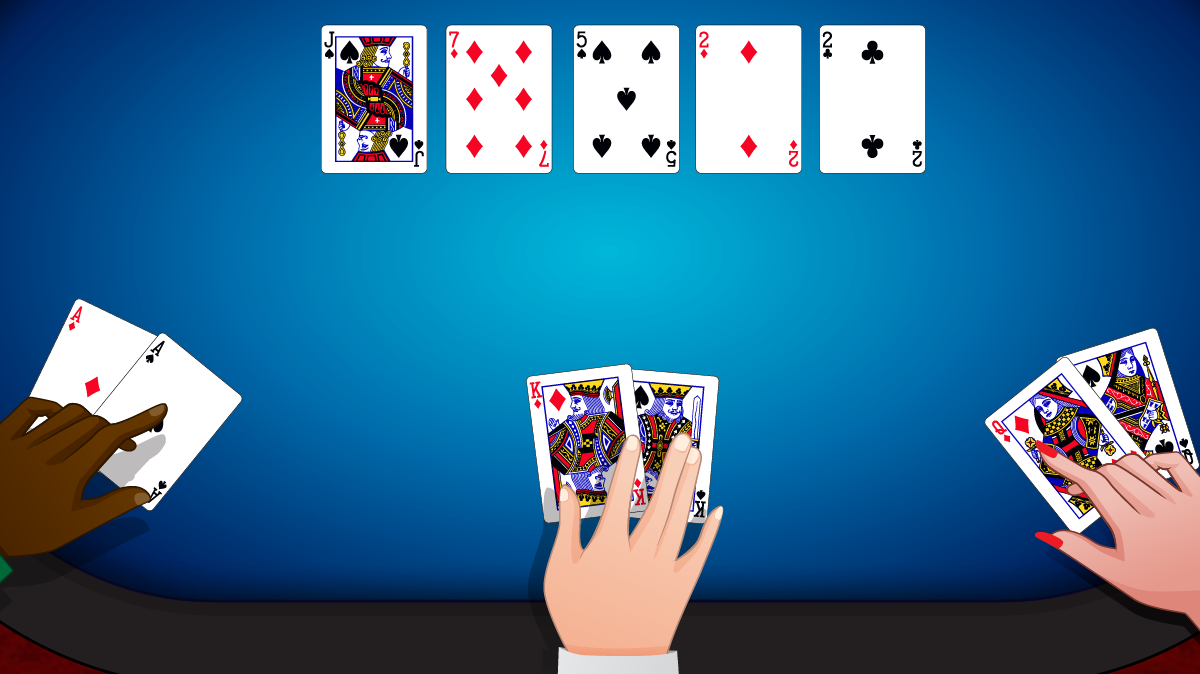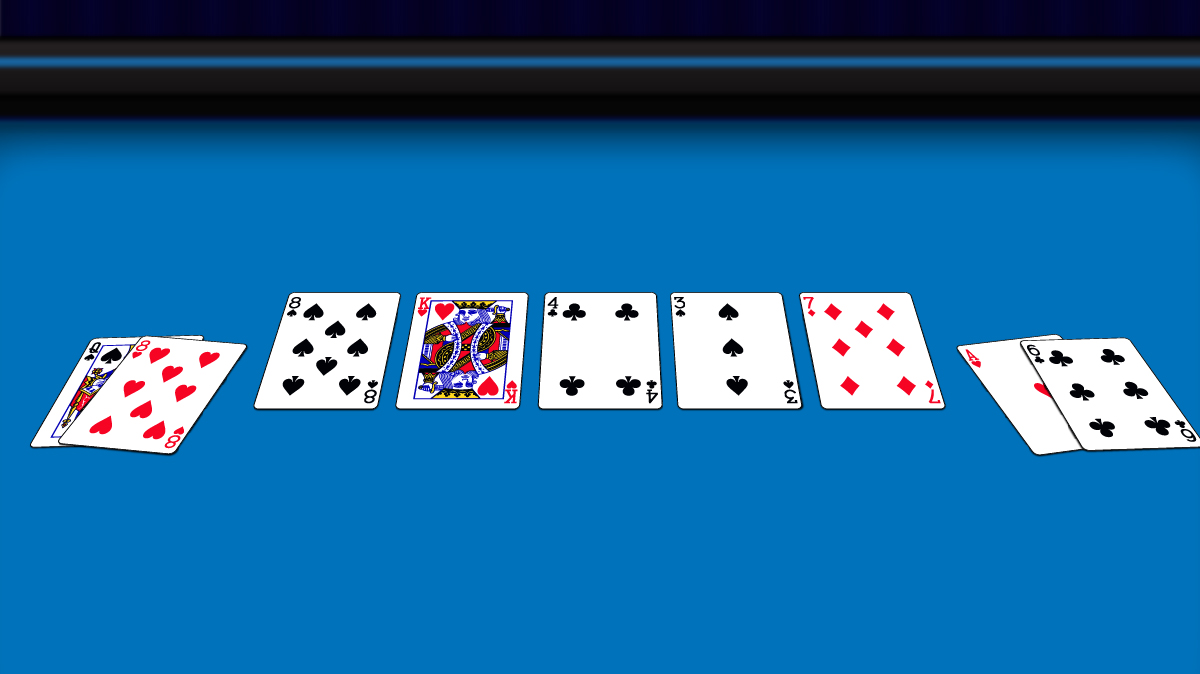Poker Rules Texas Holdem Side Pot
Players 5 and 7, who contributed to the side pot, can win the side pot and the main pot, if their hand beats the “all in” player. If player 6 has the winning hand after the final betting round, then he will win the $70 pot, but the side pot will be won by either player 5 or player 7.

In our lesson on the three main betting variations of poker, we used an example where a player in a no-limit game could bet far more than anyone else at the table, provided the player had such an amount. Poker is always played at table stakes, and this means you can only wager the amount of money you have in front of you when the hand begins. It is quite common for a player to run out of money during a hand. If you have more money than another player, it doesn’t mean you can bet them out of the pot because they can’t afford to call your bet. Otherwise the poker player with the most money would always win if he bet all his chips, and it wouldn’t be a very enjoyable game.
All-in Bets
- Texas Hold'em No-limit and pot-limit games, without exception. For pot-limit and no-limit poker rules, there may be specific exceptions to this rule. When a side pot is involved, those playing in that pot should show their cards before those who are only involved in the main pot. In stud games, suit can be used to break ties.
- Poker Basics ♥ Texas Holdem Basics ♥ Poker Terms ♥ Poker Hands ♥ Poker Tells ♥ Poker Information ♥ Texas Holdem Online. Online Poker Tournaments ♥ Sit n Go Tournament Tips ♥ Poker Freerolls. Side Pot - An additional pot which is created when one or more players are all in. Virtually all casino poker games.
When a player puts all his chips into the pot he is said to be “all-in”. The important thing to know is that a player can never be bet out of a pot because he always has the option to call for all of his chips. For example, a player with $50 goes all-in, and everyone folds apart from a player who only has $30 left:
Figure 1
This player cannot match the $50 bet, but he can also go all-in for his last $30. When nobody else is involved, the first player would get back the unmatched $20 bet (i.e. his bet is $30 rather than $50). This is shown in figure 2, below:
Figure 2
In this example the shorter-stack wins the pot, but the surplus $20 is returned to player 5.
The whole point of this is that players can take back any extra money when another player is all-in for less, when nobody else has called. The same applies to an extreme no limit example, where a player might bet $10,000 in a $1/$2 game. Here’s an example where it’s folded around to the big blind, who has $10 remaining in his stack.
Figure 3
He has $12 in total and clearly can’t match the $10,000 – but he can go all-in. If he does then the player with $10,000, would take back $9,988. No more betting would take place, as there isn’t anything left to wager. After the flop, turn and river, the player with the best hand would win the $25 pot ($12 from each plus the small blinds $1).
Side Pots
It can be a little more complicated when there’s more than two players involved in a hand. This is when a side pot is created for the other players, and any further bets cannot be won by the all-in player. The all-in player is eligible for the main pot only.
Take a look at figure 4, below, which shows three players remaining in a hand. Two players have $50 each, and another has just $10 remaining. In this example the pot already contains $40 from the previous betting rounds. Player 5 makes a bet of $20:
Figure 4
Player 6 only has $10 but he can call for his last $10 (and would therefore be “all in”) or fold. If player 6 decides to go all-in for his last $10, then the last active player (player 7), who has $50, can call, but must call for $20, which is the original bet, or he can raise. If he calls then a side pot is created, as is shown in figure 5:
Figure 5
The main pot now contains $70, which is made up of the existing $40 in the pot, plus $10 x 3. Player 6 is “all in” and can only win this main pot. A side pot containing the extra $20 is created, and can only be won by the players who contributed to this side pot (players 5 and 7). The next card will be dealt and further betting will take place. Any further bets are added to this side pot, and not the main pot. Players 5 and 7, who contributed to the side pot, can win the side pot and the main pot, if their hand beats the “all in” player. If player 6 has the winning hand after the final betting round, then he will win the $70 pot, but the side pot will be won by either player 5 or player 7.

Conclusion
There has been quite a bit of information in this lesson, which to the uninitiated could be confusing. As soon as you start playing poker you’ll quickly become familiar with these betting basics because they occur very frequently. Sometimes there can be lots of different side pots during a hand involving lots of different players – whether it’s limit, pot limit, or no limit poker. This is because not everyone has the same amount of chips – and players who have fewer chips than an opponent cannot win more from a player than they contributed themselves. The important thing to remember is that a player can never be bet out of hand because he doesn’t have enough to call.
Related Lessons
By Tim Ryerson
Tim is from London, England and has been playing poker since the late 1990’s. He is the ‘Editor-in-Chief’ at Pokerology.com and is responsible for all the content on the website.
Related Lessons
In the early twentieth century, a new variation of poker known as Hold’em was born in Robstown, Texas. This new poker variation called for its players to share five common cards and combine them with two private hole cards to make the best possible 5-card hand. Some of the earliest players called Hold’em a “thinking man’s game” because this new way of playing allowed poker players to take control of their own fates and utilize a wide variety of strategies.
Texas Hold’em quickly spread throughout Texas and in 1967 it became accepted in some Las Vegas casinos. For decades, Texas Hold’em was popular among professional poker players, but it remained relatively unknown to the general public. It would take three more decades before Texas Hold’em could finally exploded into the mainstream culture and become one of the most popular poker games in the world. Texas Holdem poker sites are the most common form of poker played online.
Rules for Playing Texas Hold’em

Texas Hold’em typically accommodates up to 9-10 players, but as few as two can play the game at a time. There is a dealer chip, known as the ‘button’, that is passed clockwise after each round to designate player position for the blinds or antes. Typically the player sitting to the left of the dealer chip pays the ‘small blind’ and the player sitting to their left pays the ‘big blind’. The big blind is generally twice the size of the small blind. Once both blinds have been posted, every player is dealt two cards, face down (known as ‘hole cards’), and the game begins.
After all of the hole cards have been dealt, the player to the left of the big blind can start the initial, ‘pre-flop’ round of betting. These first bets must be at least the size of the table’s minimum bet and the betting continues clockwise until each player has either:
- Bet as much as every other player by ‘calling’ bets and raises.
- Bet their entire bankroll.
- Folded their cards and withdrawn from the hand.
The two players who posted blinds can apply the value of these blinds towards their pre-flop bets. Assuming there are still two or more players remaining in the game after the pre-flop round of betting, the dealer will proceed to burn the card on the top of the deck (remove it from play) and deal the first three community cards, face up, in the center of the table. These first three cards are known as the ‘flop’ and are part of every player’s hand. After the flop is dealt, the second round of betting takes place.
This pattern of burning a card, dealing to the community hand, and completing a round of betting continues throughout the game. After the flop, the ‘turn’ card (fourth community card) is dealt, and finally the ‘river’ (fifth and final community card) is dealt; in total there are four rounds of betting. After the final round of betting, if more than one player is still in the game, all players must flip their hole cards and the player with the best five card hand is awarded the pot. If two or more players have equally valued hands, then they split the pot evenly.

Going All-In in Texas Holdem No Limit
Poker Rules Texas Holdem Side Potots
If you don’t have enough money to call a previous bet or if you want to put your full bankroll on the table in the form of a raise, you can choose to go ‘all-in’. When you go all-in, you can remain in the round without having to make any further wagers. Often tournaments require any player who goes all-in to flip their hole cards face up, though cash games generally do not have this rule.
Texas Holdem Poker Rules Hands
After you go all in, any further bets placed by your opponents are placed in a side pot. Only players who contribute to the side pot are eligible to win these funds. If you win a hand after going all in, players who wagered more money than you, in the form of a side pot, get the difference returned to them.